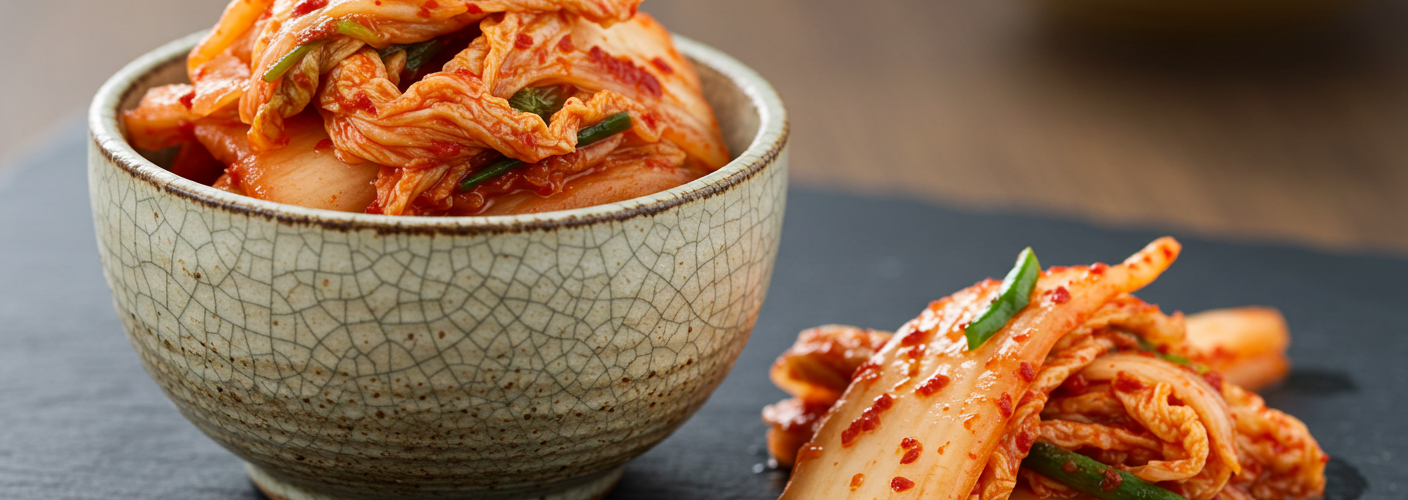Kimchi, a cornerstone of Korean cuisine, has steadily gained popularity across the globe for its unique flavor profile and numerous health benefits. It is primarily made from salted and fermented cabbage, but it can also include a variety of ingredients like radishes, scallions, and spices. This beloved dish is more than just a side; it’s a vibrant part of a culture that appreciates the exquisite balance of flavors and the science of fermentation.
One of the defining characteristics of kimchi is its fermentation process. Traditionally, napa cabbage is salted and left to ferment for a period, allowing beneficial bacteria to thrive. This natural fermentation not only preserves the cabbage but also enhances its nutritional value, turning it into a probiotic powerhouse. The beneficial bacteria produced during fermentation can aid digestion and contribute to gut health—factors increasingly recognized in modern nutrition.
But what makes kimchi truly special goes beyond its health benefits; it’s the rich, bold flavors that come from its unique ingredients. The basic recipe starts with Napa cabbage, which is then coated with a mixture of Korean red pepper flakes (gochugaru), garlic, ginger, and fish sauce or salt. However, variations are countless. Some recipes include fruits, like pears or apples, for a touch of sweetness, while others incorporate different vegetables or seafood to elevate the complexity of flavors.
Kimchi is incredibly versatile in cooking. It can be served on its own, as a delightful side dish, or incorporated into various recipes. From kimchi fried rice to kimchi stew (kimchi jjigae), this fermented delight can enhance the taste of many dishes. Its tangy flavor can complement meaty dishes or even be used as a zesty topping for tacos and burgers, merging culinary traditions beautifully.
Beyond its flavor and versatility, kimchi boasts impressive health benefits. It is low in calories yet high in vitamins A, B, and C. Furthermore, due to its fermentation process, kimchi is rich in probiotics, which are essential for maintaining a healthy gut microbiome. Studies have indicated that incorporating fermented foods like kimchi into the diet can support immune function and may even have anti-inflammatory properties.
The cultural significance of kimchi extends far beyond the kitchen. In Korea, making kimchi is often a communal activity. Families gather during the winter months for a tradition known as “Kimjang,” where they prepare large quantities of kimchi to last through the colder months. This event strengthens familial bonds and is recognized by UNESCO as an Intangible Cultural Heritage of Humanity, highlighting its importance in Korean culture.
As global interest in healthful and flavorful food continues to rise, kimchi’s popularity will likely endure. It offers a unique combination of health benefits, flavor, and cultural richness that few other foods can provide. For those looking to expand their culinary repertoire or simply searching for a nutritious addition to their diet, kimchi is an excellent choice. Whether enjoyed fresh or in cooked dishes, it promises a flavorful experience that nourishes both body and soul.
In conclusion, kimchi is more than just fermented cabbage; it’s a vibrant tradition, a healthful superfood, and a versatile ingredient that continues to captivate food lovers worldwide. Embrace the flavors, celebrate the culture, and enjoy the myriad benefits of this iconic dish.




Add comment